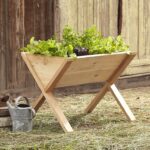Landscaping ideas after tree removal are crucial for maintaining the appearance and value of your property. The removal of a tree can leave a noticeable void in your landscape, and proper planning and execution are essential to ensure that the new space is both aesthetically pleasing and functional.
This article will provide you with tips and suggestions for effectively landscaping after a tree removal, including assessing your space, selecting replacement trees or plants, filling the empty space creatively, enhancing curb appeal, creating functional outdoor spaces, and ongoing maintenance.
After the removal of a tree from your property, it is important to assess the space left behind. Factors such as sunlight exposure, soil type, and potential obstacles will influence your landscaping decisions.
By carefully evaluating these elements, you can make informed choices about what new trees or plants will thrive in the specific environment and complement your existing landscape. Once you have chosen suitable replacements, it’s time to fill the empty space with flowers, shrubs, or other garden features that not only enhance the aesthetic appeal of your property but also contribute to its overall value.
In addition to enhancing curb appeal and visual interest through landscaping after tree removal, there are opportunities to create functional outdoor spaces for living, entertaining, or gardening purposes. With thoughtful planning and creative ideas for utilizing the newly opened area on your property, you can elevate its functionality while beautifying its surroundings.
Understanding how ongoing maintenance plays a crucial role in preserving the health and longevity of new landscape features is equally important. Stay tuned for expert recommendations on how to care for your newly landscaped areas beyond just planting them in place.
Assessing Your Space
Amount of Sunlight
When evaluating the area where a tree has been removed, one of the first things to consider is the amount of sunlight that now reaches the space. Take note of how much direct sunlight the area receives throughout the day, as well as any potential shade from nearby structures or remaining trees. This will help you determine what types of plants will thrive in this new environment and allow you to make informed decisions when selecting replacements.
Soil Type
Another important factor to consider when assessing your space after tree removal is the type of soil present. The soil’s composition can impact drainage and nutrient availability for plants, so it’s crucial to understand what you’re working with. Test your soil to determine its pH levels and texture, which will guide your choices for new plants or trees that will best suit the specific soil conditions.
Potential Obstacles
Finally, assess any potential obstacles that may affect plant growth in the newly opened space. These obstacles could include underground utilities, irrigation systems, or even remnants of tree roots left behind after removal. Taking these into account and planning around them will help avoid complications later on and ensure a successful landscaping project.
By carefully evaluating these factors and considering all aspects of your space post-tree removal, you can make well-informed decisions about future landscaping ideas after tree removal that will contribute positively to your property’s overall aesthetic appeal and value.
Choosing Replacement Trees
When it comes to landscaping ideas after tree removal, choosing replacement trees and plants is a crucial step in the process. The right selection can complement your existing landscape and thrive in the specific environment, enhancing the overall appearance and value of your property. Here are some suggestions for selecting new trees or plants that will thrive in the area where the tree was removed:
- Consider the amount of sunlight: Evaluate how much sunlight the area receives throughout the day. This will help you determine whether you need to choose shade-loving plants or those that require full sun.
- Assess soil type: Different plants thrive in different types of soil. Take into account the soil drainage and pH levels to select trees or plants that will grow well in the specific environment.
- Research potential obstacles: Identify any potential obstacles such as overhead power lines, underground utilities, or nearby structures that may impact the growth of new trees or plants.
In addition to considering these factors, it’s important to choose replacement trees and plants that complement your existing landscape. Look for species that will blend well with your current plantings and enhance the overall aesthetic appeal of your property. When choosing replacement trees, consider their mature size and shape to ensure they fit within the space left by the removed tree.
Lastly, consider consulting with a local nursery or landscaping professional for expert advice on selecting replacement trees and plants. They can provide valuable insight into which species are best suited for your specific environment and offer recommendations for creating a cohesive and thriving landscape after tree removal. By carefully selecting new trees and plants, you can create a beautiful and thriving landscape that adds value to your property.
Filling the Empty Space
After the removal of a tree from your property, it’s important to consider how to fill the empty space in a way that enhances the overall landscape. This is an opportunity to get creative and incorporate new elements that will bring beauty and interest to the area. Whether you choose to plant flowers, shrubs, or add garden features, there are several landscaping ideas after tree removal that can help you make the most of the space.
Planting Colorful Flowers
One of the most popular options for filling the void left by a removed tree is planting colorful flowers. Consider selecting a variety of annuals and perennials that bloom at different times throughout the year to ensure there is always something in bloom. This will not only add visual appeal but also attract pollinators such as bees and butterflies to your garden.
Adding Ornamental Shrubs
Another effective way to fill empty space after tree removal is by adding ornamental shrubs. Look for options that offer seasonal interest, such as flowering shrubs or those with vibrant foliage. Make sure to consider the mature size of the shrub and its growth habit when making your selection so it complements the remaining landscape.
Incorporating Garden Features
If you’re looking to add a unique touch to the newly opened area, consider incorporating garden features such as a small water feature, a decorative trellis, or a statue. These additions can serve as focal points and create visual interest while enhancing the overall aesthetic appeal of your property.
By exploring these landscaping ideas after tree removal, you can transform the empty space into a beautiful and functional part of your landscape design while increasing curb appeal and adding value to your property.
Enhancing Curb Appeal
When a tree is removed from your property, it can create an opportunity to enhance the curb appeal of your home through thoughtful landscaping. The visual impact of your property can be greatly improved with the right design elements and plant selections.
To elevate the overall aesthetic appeal of your property, consider implementing the following landscaping ideas after tree removal:
- Incorporate a variety of flowers and plants that provide colorful blooms throughout the year. Choose species that thrive in your specific climate and soil conditions.
- Install an eye-catching garden feature, such as a water fountain, sculpture, or colorful mosaic pathway, to draw attention to the newly opened space.
- Utilize hardscaping elements like retaining walls, decorative fencing, or stone pathways to add dimension and structure to the landscape.
By carefully planning and executing these landscaping ideas after tree removal, you can transform the void left by the removed tree into a visually stunning element of your property’s exterior. Additionally, enhancing curb appeal through landscaping can increase the value of your home and create a welcoming atmosphere for both residents and guests.
Creating Functional Spaces
After tree removal, you may find yourself with a newly opened area in your yard or garden. This void left by the removed tree can actually provide an opportunity to create functional spaces for outdoor living, entertainment, or gardening purposes. With some creativity and planning, you can transform this space into a valuable and attractive part of your property.
If the area previously occupied by the tree receives a good amount of sunlight, consider turning it into an outdoor seating or dining area. Adding a patio or decking can create an inviting space for relaxation and entertaining. You may also want to incorporate some shade elements like umbrellas, pergolas, or even planting new trees to provide relief from the sun during hot days.
For those who enjoy gardening, the empty space is a blank canvas for planting flower beds, vegetable gardens, or creating a small herb garden. Depending on your preferences and climate conditions, you can choose to plant colorful flowers to enhance visual appeal or grow fresh produce that you can harvest and enjoy. Additionally, consider adding decorative features like garden sculptures, water fountains, or trellises to add interest to the new garden space.
Furthermore, if you have been longing for an outdoor recreational area such as a playset for kids or a barbecue station for hosting family gatherings, this is the perfect time to materialize your ideas. By carefully planning and considering how you want to use the space, you can turn it into an extension of your home where you can relax and entertain guests while maximizing the potential of your property.
Planning is key but whatever purpose suits best will be great after landscaping.
| Functional Spaces | Ideas |
|---|---|
| Outdoor Living Area | Consider adding patio or decking with shade elements. |
| Gardening Space | Create flower beds, vegetable gardens or decorative features. |
| Entertainment Area | Add features like playsets for kids or barbecue stations. |
Maintenance and Care
After removing a tree from your property, it’s crucial to pay close attention to the maintenance and care of your new landscape features. Proper upkeep will ensure the health and longevity of the replacement trees, plants, and other landscaping elements you introduce to fill the space left behind. Watering, pruning, and fertilizing are essential tasks that require regular attention in order to achieve a vibrant and thriving landscape.
Watering is essential for newly planted trees, shrubs, or flowers. Young trees should typically be watered once or twice a week during dry periods, making sure that the soil around them remains consistently moist. As they mature, the frequency of watering may decrease, but it’s important to monitor their needs based on weather conditions and soil moisture levels.
Pruning is another key aspect of maintaining your post-tree removal landscape. Regular pruning helps shape plant growth, remove dead or diseased branches, and promote new growth. It also allows for better air circulation through the foliage, reducing the risk of disease and pest infestation. Be sure to use proper pruning techniques to avoid damaging your plants.
Fertilizing is essential for providing your replacement trees and plants with necessary nutrients for healthy growth. Using a balanced fertilizer in early spring can help encourage strong root development and lush foliage. Consider consulting with a local nursery or landscaping professional to determine the best type of fertilizer for your specific landscape needs.
With ongoing maintenance and care efforts such as watering, pruning, and fertilizing, you can ensure that your new landscape features thrive in their environment for years to come – greatly enhancing the overall appearance and value of your property.
| Maintenance Tasks | Frequency |
|---|---|
| Watering | Once or twice a week during dry periods |
| Pruning | Regularly as needed |
| Fertilizing | Once in early spring |
Final Tips and Resources
In conclusion, landscaping after tree removal is an important step in maintaining the appearance and value of your property. The process involves assessing the space left by the removed tree, choosing suitable replacement trees or plants, filling the empty space creatively, enhancing curb appeal, creating functional spaces, and ensuring ongoing maintenance for the new landscape features.
By approaching landscaping with thoughtful consideration and planning, you can transform the area into a beautiful and functional space that adds to the overall aesthetic appeal of your property.
When evaluating the area where the tree was removed, consider factors such as sunlight exposure, soil type, and potential obstacles to determine the best options for replacing the tree. Whether it’s selecting new trees or incorporating flowers and shrubs, choose plants that will thrive in the specific environment and complement the existing landscape. Additionally, consider adding garden features or outdoor living spaces to utilize the newly opened area for entertaining or gardening purposes.
It’s important to remember that proper maintenance is crucial for ensuring the health and longevity of your new landscape features. Regular watering, pruning, and fertilizing are essential tasks to keep your landscaping looking its best. For additional guidance and expert advice on landscaping after tree removal, there are reputable nurseries and landscaping professionals who can provide valuable resources and support as you embark on this process of rejuvenating your outdoor space.
By taking these suggestions into account as you plan your landscaping ideas after tree removal, you can create a visually appealing and functional outdoor space that enhances the overall beauty of your property while also increasing its value.
Frequently Asked Questions
What to Do With the Ground After a Tree Is Removed?
After a tree is removed, there are several options for what to do with the ground. One option is to grind the stump down below ground level and then backfill the hole with soil.
Another option is to plant grass or ground cover over the area once the stump is removed. You could also consider planting a new tree in the same spot, if that is appropriate for your landscaping goals.
What Can I Plant After Removing a Tree Stump?
After removing a tree stump, you have several options for what to plant in its place. You could consider planting a new tree to replace the one that was removed, making sure to choose a species that is suitable for the location and won’t be affected by any remaining roots from the old tree.
Alternatively, you could opt for planting shrubs, flowers, or other ornamental plants to enhance the aesthetic appeal of the area.
How Long Does It Take for Ground to Settle After Tree Removal?
The time it takes for the ground to settle after tree removal can vary depending on factors such as soil type, weather, and how large and deep the root system was. In general, it’s common for settling to continue over several months as the soil naturally adjusts to fill in the spaces left behind by the roots.
It’s important to monitor the area during this settling period and make any necessary adjustments or additions of soil as needed for safety and aesthetics.

Welcome to my gardening blog! I am passionate about plants and enjoy sharing my knowledge and experiences with others. In this blog, I will write about everything related to gardening, from tips on how to get started to updates on my own garden projects.





